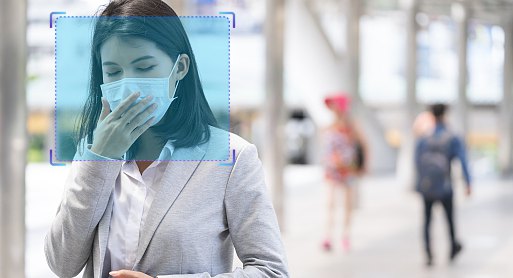
Uniform Recognition

Algorithm Introduction
The uniform compliance detection algorithm employs visual analysis technology to automatically identify personnel without proper work uniforms in designated office areas, outputting bounding boxes of non-compliant individuals along with confidence scores and headcount statistics. Capable of detecting both standing and seated postures, this solution helps workplaces enforce dress codes and standardize professional conduct. Optimized for well-lit indoor environments, the algorithm delivers high recognition accuracy while enabling seamless data traceability and attendance system integration.
- ● Lighting conditions: Minimum 50% bright pixel ratio in human body regions (grayscale value >40)
- ● Image requirements: Recommended resolution ≥1000×600
- ● Target size: Human figures must measure ≥60×126 pixels in detection frame
FAQ
-
Algorithm AccuracyAll algorithms published on the website claim accuracies above 90 %. However, real-world performance drops can occur for the following reasons:
(1) Poor imaging quality, such as
• Strong light, backlight, nighttime, rain, snow, or fog degrading image quality
• Low resolution, motion blur, lens contamination, compression artifacts, or sensor noise
• Targets being partially or fully occluded (common in object detection, tracking, and pose estimation)
(2) The website provides two broad classes of algorithms: general-purpose and long-tail (rare scenes, uncommon object categories, or insufficient training data). Long-tail algorithms typically exhibit weaker generalization.
(3) Accuracy is not guaranteed in boundary or extreme scenarios.
-
Deployment & InferenceWe offer multiple deployment formats—Models, Applets and SDKs.
Compatibility has been verified with more than ten domestic chip vendors, including Huawei Ascend, Iluvatar, and Denglin, ensuring full support for China-made CPUs, GPUs, and NPUs to meet high-grade IT innovation requirements.
For each hardware configuration, we select and deploy a high-accuracy model whose parameter count is optimally matched to the available compute power.
-
How to Customize an AlgorithmAll algorithms showcased on the website come with ready-to-use models and corresponding application examples. If you need further optimization or customization, choose one of the following paths:
(1) Standard Customization (highest accuracy, longer lead time)
Requirements discussion → collect valid data (≥1 000 images or ≥100 video clips from your scenario) → custom algorithm development & deployment → acceptance testing
(2) Rapid Implementation (Monolith:https://monolith.sensefoundry.cn/)
Monolith provides an intuitive, web-based interface that requires no deep AI expertise. In as little as 30 minutes you can upload data, leverage smart annotation, train, and deploy a high-performance vision model end-to-end—dramatically shortening the algorithm production cycle.






